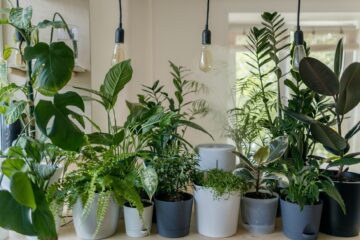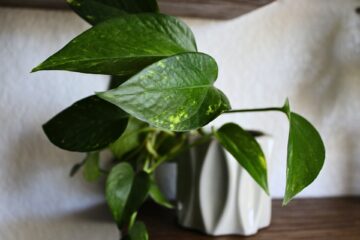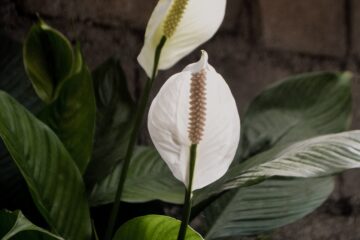Introduction
If you’re looking for a way to bring some colour and life into your home, an indoor garden is one of the best ideas. It can be as simple as growing a few herbs or vegetables in your kitchen, or it can be more ambitious like creating an entire ecosystem that brings the outdoors in. The most important thing to remember when starting an indoor garden is that it’s not just about the plants—it’s about making sure everything else around it is taken care of too. The following tips will help you create a successful indoor farm so you can start enjoying the fruits of your labour right away!
Pick the right plants
The first step in starting an indoor garden is selecting the right plants. Here are some things to consider when choosing your plants:
- Easy to grow: If you’re new to gardening, it’s best to start with easy-to-grow varieties of common houseplants. These include begonias (Begonia spp.), waxflowers (White Swan or Calla lily), ferns and mosses (Mosses). If you have more time on your hands and want something more difficult, try experimenting with cycads or conifers such as pine trees in pots.
- Easy maintenance: Look for low-maintenance houseplants that require little care beyond watering regularly during warm weather months but will not require much water once winter arrives if they’re indoors year round—for example succulents like aloe vera leaves which require minimal attention throughout most years; cacti like prickly pear pads which need no special care at all except for repotting annually; herbs such as mints which need only occasional trimming back after flowering ends each year; perennials like agaves cacti whose thick roots may grow up through walls but can easily be pruned away if desired later on down the road!
Consider your space
Once you’ve decided to start an indoor garden, the next step is figuring out where you plan on putting your plants. This can be a bit tricky because there are so many factors involved in this decision:
- Where do I want my plants? Do I want them in one place or multiple places?
- What kind of space do I have available for them? Is it small and narrow or large enough for several pots of herbs or flowers? If it’s too big, then maybe growing some other things on top of your herbs will help fill up unused space (like growing tomatoes). If it’s too small, then maybe adding support structures like grow lights would help give more light throughout the day so that nothing gets dried out by direct sunlight during certain times of day when it gets darker outside at nightfall.
Consider your time
- Watering: Your plants need to be watered regularly, so you’ll have to be sure that you have enough time for this.
- Fertilizing: Fertilizing your indoor garden is important because it will help keep your plants healthy and growing well.
- Pruning: If a plant grows too tall or thin out of shape from being over-watered or over-fertilized, then it may need pruning so that the plant does not get damaged by its own growth rate.
- Rotating crops: Some crops do better if they aren’t planted in the same spot year after year; this can be helpful if you want diversity within an area without having too many different types of plants growing together at once!
Consider your light sources
The best way to keep your plants healthy and thriving is to provide them with the right amount of light. This can be difficult, as there are many different types of lighting that will work for your indoor garden.
You should consider three things when choosing a light source: cost, durability and convenience. Fluorescent lights are cheap and easy to find; LED lights are more expensive but last longer. LEDs also require less power than fluorescents do (and therefore don’t need as much electricity). If you’re going this route, take note that fluorescent tubes have a lifespan limit between 20-30 years depending on how often they’re used. LEDs typically have lifespans up around 100000 hours before needing replacement!
As for what kind of fixture works best for each type of plant? Consider its needs first: if it prefers bright sunshine all day long then go with an incandescent bulb (like those found in traditional lamps). If not then look into other options such as grow lights or hydroponic systems. These generally provide better results than CFLs will ever offer.
Invest in good soil
Start with good soil. When you buy potting mix or soil, look for something that’s nutrient rich and well aerated (not compacted). It should also be moist but not wet, with a pH of 6.5 – 7.5
Water regularly, but don’t overwater!
When it comes to watering plants, the frequency depends on the type of soil and container size. For example, a small container will dry out quicker and will need to be watered every three days. If you have large containers moisture will be retained for longer, then we recommend watering at least once a week.
Watering frequency also depends on how much sunlight your indoor garden receives during the day. The less light there is during winter months when temperatures are low outside compared to summer months when temperatures are higher outside—the less often you should water your indoor garden. This is because over-watering can lead to root rot or wilting leaves which will negatively impact growth over time. Act immediately after noticing signs such as yellowing leaves and/or wilting stalks. Under-watering can problems too. Water immediately after noticing symptoms such as brown patches appearing first on older leaves before spreading throughout entire plant structure. Without a quick remedy all leaves may die off completely leaving behind only roots left behind. These must be dug up carefully so as not damage any surrounding structures nearby.
When you see pests, take action.
If you see pests, take action immediately.
You don’t want to wait until the problem gets worse before taking steps to prevent further damage. If you don’t know how to handle a pest problem or what steps to take, ask an expert for help.
Keep these things in mind and you’ll have a healthy indoor garden that will grow fast
- Choose plants that are easy to grow.
- Choose plants that are appropriate for your space and time. If you live in a small apartment, it’s best not to plant anything too large or heavy-duty. Likewise, if you’re going to be away from home for an extended period of time (like on vacation), choose something more delicate so it doesn’t die while you’re away.
- Pick plants that work well with the light sources available in your home—make sure they don’t need bright sunlight or lots of direct sunlight; try them out first! You’ll know whether or not they belong in your indoor garden when their leaves are green instead of yellowish brown (or even black).
Conclusion
Remember that starting an indoor garden is a lot of work, but you’ll be glad you did. You can use money that you would have spent on fresh food at the supermarket to buy seeds and soil. And if all else fails, just remember:
It’s worth it! Have fun with this new hobby. Don’t forget to share any photos or videos on Instagram or Facebook using #GardensAndGardening
Keep on top of your gardening with our free online journal
Our free online tool allows you to organise your ideas and garden plans and help you be as efficient as possible in the garden.
Sign up now

